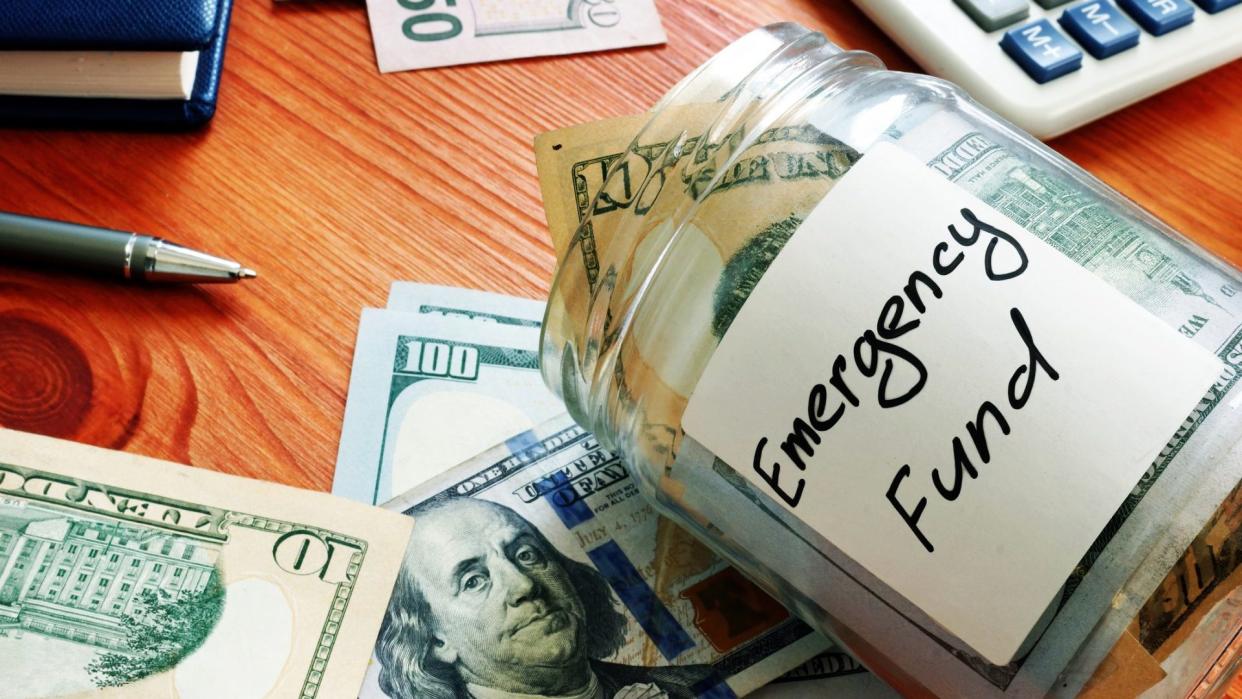Emergency Fund Planning: Should It Be Separate From Your Savings Account?

An emergency fund is one of the primary building blocks of a healthy financial life — but so is a budget that’s as simple as humanly possible. After all, the less complicated your saving strategy, the more likely you’ll be to actually stick to it.
See: How To Transfer Money From Savings Into a High-Yield Savings Account
Find Out: 4 Best Places To Keep Your Money That Aren’t a Checking Account
With those two facts in mind, is it really necessary to keep a dedicated emergency fund that’s separate from your non-emergency savings, or does opening yet another account make your financial life more complicated than it needs to be?
A new GOBankingRates study of more than 1,000 people offers insight into how the masses structure their savings, and what’s to be gained or lost by lumping your savings into one basket.
Two Accounts Is the Bare Minimum — But Is That Enough?
Different financial pros offer different advice and recommend different strategies, but the experts GOBankingRates spoke with all agreed on one thing: You must fund your checking account with enough cash to cover a minimum of two pay periods or one billing cycle for all of your immediate expenses — but anything more than that is a misallocation of resources.
“In general, I recommend that a person keeps enough in their checking account to cover at least one month of spending, including housing, utilities, food and transportation,” said Kerrie Saephanh, certified budget coach and founder of Mindful Budgets.
The reason is simple.
Checking accounts pay either no interest at all or only the most modest of yields — every excess dollar languishing in checking isn’t earning the returns it could get in savings. That didn’t matter so much a year ago when the average deposit account paid 0.06%; but, thanks to the Fed’s ongoing anti-inflation action, there’s real money on the line today.
“With interest rates going up now, you may be able to get 3% to 4% interest or more,” said consumer finance expert Kyle Enright, president of lending at Achieve, a personal finance company in San Mateo, California.
Take Our Poll: Are You Concerned About the Safety of Your Money in Your Bank Accounts?
Isn’t All Savings for Emergencies?
Enright is not exaggerating.
At least nine or 10 banks — both online and physical — are currently offering deposit yields in the 3% to 4% range or better. But none of them pay you more or less whether you label your account as “savings” or “emergency savings,” so what’s to be gained by creating a separate account?
The GOBankingRates study revealed that many people don’t see the point.
About 25% would turn to their emergency funds in the face of a crisis. But another 15% or so would simply dip into their standard savings, which implies that they consider a savings account and an emergency fund to be one and the same. But they’re not.
Build Your Savings for Wants, Emergency Funds for Needs
A standard savings account gives you a buffer between the liquid cash in your day-to-day checking account and your last-line-of-defense, can’t-touch emergency fund.
“Your priority should be building up your emergency fund until it reaches that point of having three to six months’ worth of expenses in it,” said Erin Ellis, accredited financial counselor at Philadelphia Federal Credit Union. “Then after that, whatever else you can spare should go into your non-emergency savings, which can be used down the line on big purchases like a house, new car or a vacation.”
When you lump them together, you risk adopting a complacent money mindset that assigns goals such as vacations and emergencies such as car repairs an equal level of priority.
“If it takes even just a little more effort to get to it, you’ll be less likely to use it unless you really need to,” Enright said. “Keeping money intended for savings in an account where you just mentally note that it’s ‘saved’ generally doesn’t work.”
There’s a Real Motivating Power in Watching Your Savings Grow
Since emergency funds don’t earn any more or less interest than standard savings, most of the logic for maintaining multiple accounts goes to psychology — and just the act of setting up the accounts can promote healthy financial hygiene, especially for those who are already struggling.
“Unfortunately, sitting down and taking stock of your finances can be intimidating, but setting up a dedicated emergency fund is essential,” said Jake Hill, CEO of DebtHammer. “Aside from peace of mind in knowing you have a backup when faced with an unplanned expense or emergency, it also serves as motivation to save more overall. As much of a priority as it is, this habit may require some planning and saving discipline in order to get started on the right foot.”
More From GOBankingRates
This article originally appeared on GOBankingRates.com: Emergency Fund Planning: Should It Be Separate From Your Savings Account?

 Yahoo Movies
Yahoo Movies 
